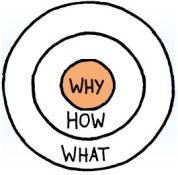“Leadership is unlocking people’s potential to become better.” ~ Bill Bradley
My organization, EDspired, has been collaborating with a PK-3 school to develop and implement a comprehensive teacher professional growth and evaluation process. It is through this collaboration that I discovered and recommended implementing TeachBoost’s instructional leadership platform.
After an unexpected change in leadership during second semester, the assistant principals are now serving as interim principals and I am serving as their leadership coach.
My team had a key decision to make regarding evaluation: Pick up where the former school leader left off and continue the processes that were in place, or start with reminding the staff of the importance of the what, how, and why of teacher evaluations. This often allows for more ownership and understanding of the process.
Typically, we would start with the WHAT:
- Implementing the teacher evaluation and growth process with fidelity
After that, we’d move on to the HOW:
- Pre-observation document
- Observation schedule
- Post-observation conferences
And sometimes, we’d discuss the WHY:
- Observations are important because they are the best way to offer contextualized, constructive, meaningful feedback rooted in the evidence of actual classroom practice.
Then I saw this quote on Twitter’s #tchat: “Great workplaces often share a sense of transparency and empowerment, they want employees to feel invested and informed.” This sparked some new thinking on my part on how I can support the school leaders with their work. I remember learning about Sinek’s Golden Circle, and realized, we must always start with why.
To create change, we need to inspire the teachers. In an effort to build relationships with staff, transparency is key.
So in this case, we started with the WHY. As a leadership team, a few of the questions we discussed to really dissect the WHY were:
- Why is the evaluation process important and how can we communicate this with the teachers?
- Why will the teachers sometimes see more than one administrator in their rooms at the same time?
- Why is it important for the school to have a common language when discussing teaching and learning?
- Why will excellent teaching lead to higher achievement with students?
To create change, we need to inspire the teachers. In an effort to build relationships with staff, transparency is key. It also happens to be one of TeachBoost’s core values, so using their tool introduced greater visibility and accountability into the observation and development process.
We are starting with the end in mind and expect to get more teachers to truly take ownership once they understand that the purpose of our professional growth and evaluation process is to ensure teacher quality and promote professional development. We want to move towards using this concept of the Golden Circle in everything we do to create positive change and inspire the staff.
We will get feedback from staff in the fall as to their perceptions and experiences of the process and how to make sure we get it right this time. Stay tuned!




